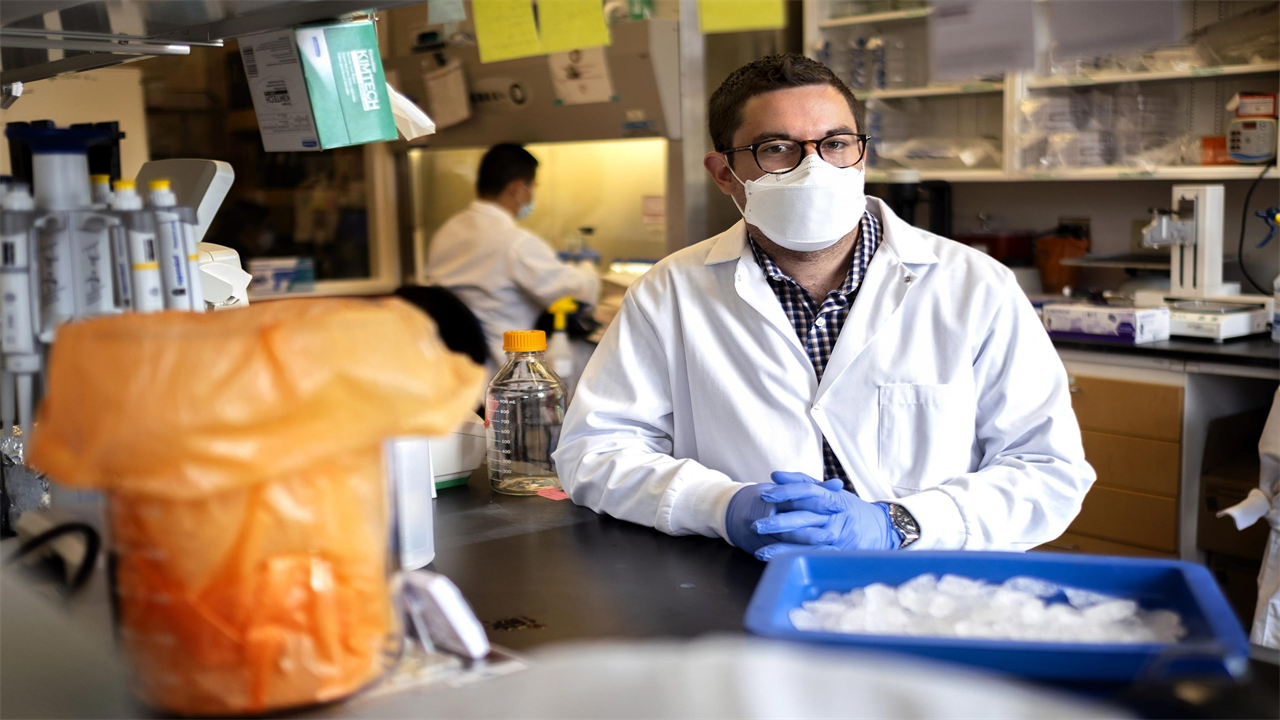New Universal Vaccine Targets COVID-19, SARS, and Other Coronaviruses to Prevent Future Pandemics
0 View
Share this Video
- Publish Date:
- 3 July, 2021
- Category:
- Covid
- Video License
- Standard License
- Imported From:
- Youtube
Tags

David Martinez, PhD., in the lab of the University of North Carolina at the Chapel Hill Gillings School of Global Public Health, is studying a new universal vaccine effective against a group of coronaviruses. Credit: Jon Gardiner/UNC-Chapel Hill
Research from UNC-Chapel Hill shows that a vaccine could be effective against COVID-19, SARS and other coronavirus-related illnesses.
Scientists at the Gillings School of Global Public Health at the University of North Carolina have developed a universal vaccine that not only protected mice against COVID-19, but also against other coronaviruses and stimulated the immune system to fight a dangerous variant.
While no one knows which virus may trigger the next outbreak, coronaviruses remain a threat after the SARS outbreak in 2003 and the global COVID-19 pandemic.
To prevent a future coronavirus pandemic, researchers at UNC-Chapel Hill designed the vaccine to protect against the current SARS-CoV-2 coronavirus and a group of coronaviruses known to jump from animals to make people.
The findings were published in Science by lead authors David Martinez, a postdoctoral researcher at the UNC Gillings School of Global Public Health and a Hanna H. Gray Fellow at the Howard Hughes Medical Institute, and Ralph Baric, an epidemiologist at the UNC Gillings School of Global Public Health and professor of immunology and microbiology at the UNC School of Medicine, whose research has led to new therapies to combat emerging infectious diseases.
The lead authors collaborated with a team of scientists from UNC-Chapel Hill, Duke University School of Medicine and the University of Pennsylvania Perelman School of Medicine.
Researchers at UNC-Chapel Hill are playing a key role in developing vaccines against the coronavirus. After testing the effectiveness of the first-generation COVID-19 vaccines, they turned to look at a second-generation vaccine: one that targets sarbecoviruses, Baric said.
Sarbecoviruses, part of the large family of coronaviruses, are a priority for virologists, after two of them caused devastating disease in the past two decades: SARS and COVID-19.
The team’s approach started with mRNA, which is similar to the Pfizer and Moderna vaccines used today. But instead of including the mRNA code for just one virus, they’ve spliced together mRNA from multiple coronaviruses.
When given to mice, the hybrid vaccine effectively generated neutralizing antibodies to multiple spike proteins — which viruses use to attach to healthy cells, including one associated with B.1.351, known as the South African variant.
“The vaccine has the potential to prevent outbreaks when used if a new variant is detected,” said Baric, a pioneer in pandemic preparedness.
The article contains data from mice infected with SARS-CoV and related coronaviruses and the vaccine prevented infection and lung damage in mice. Additional tests could lead to human clinical trials next year.
“Our findings look bright for the future as they suggest that we can design more universal pan-coronavirus vaccines to proactively protect against viruses that we know are at risk of emerging in humans,” Martinez said. “With this strategy, we may be able to prevent a SARS-CoV-3.”
Reference: “Chimeric Spike mRNA Vaccines Protect Against Sarbecovirus Challenge in Mice” by David R. Martinez, Alexandra Schäfer, Sarah R. Leist, Gabriela De la Cruz, Ande West, Elena N. Atochina-Vasserman, Lisa C. Lindesmith , Norbert Pardi , Robert Parks, Maggie Barr, Dapeng Li, Boyd Yount, Kevin O. Saunders, Drew Weissman, Barton F. Haynes, Stephanie A. Montgomery, and Ralph S. Baric, June 22, 2021, Science.
DOI: 10.1126/science.abi4506
The National Institutes of Allergy and Infectious Disease of the National Institutes of Health and the North Carolina Policy Collaboratory, with funding from the North Carolina General Assembly, supported the research.










